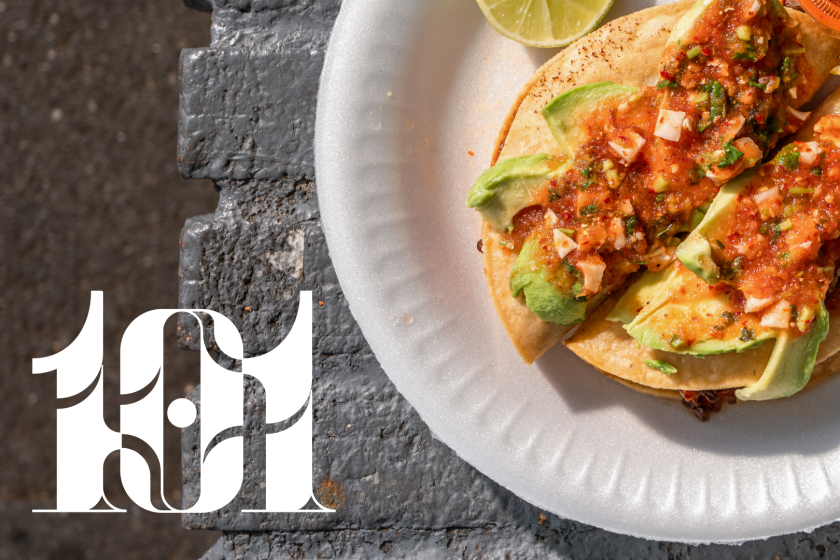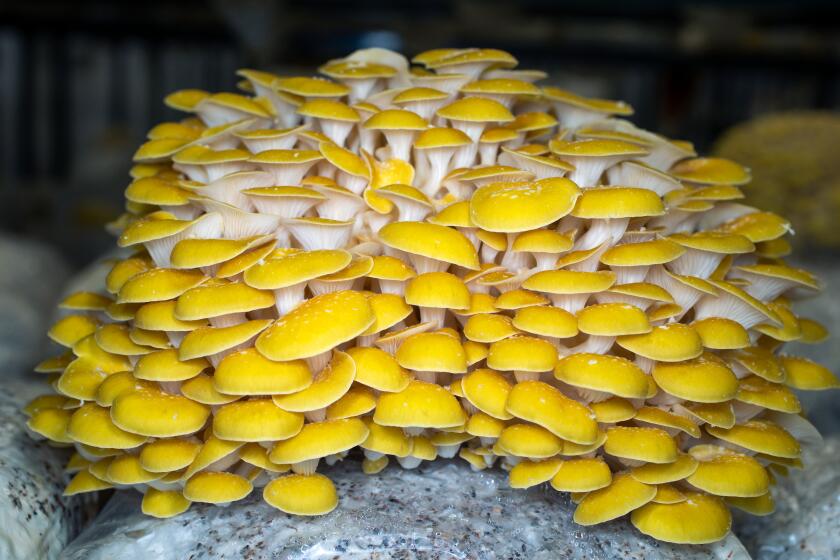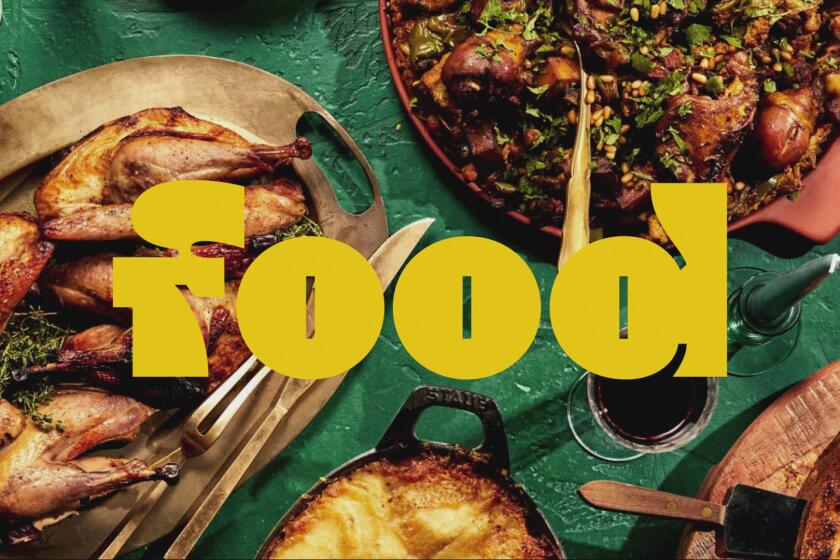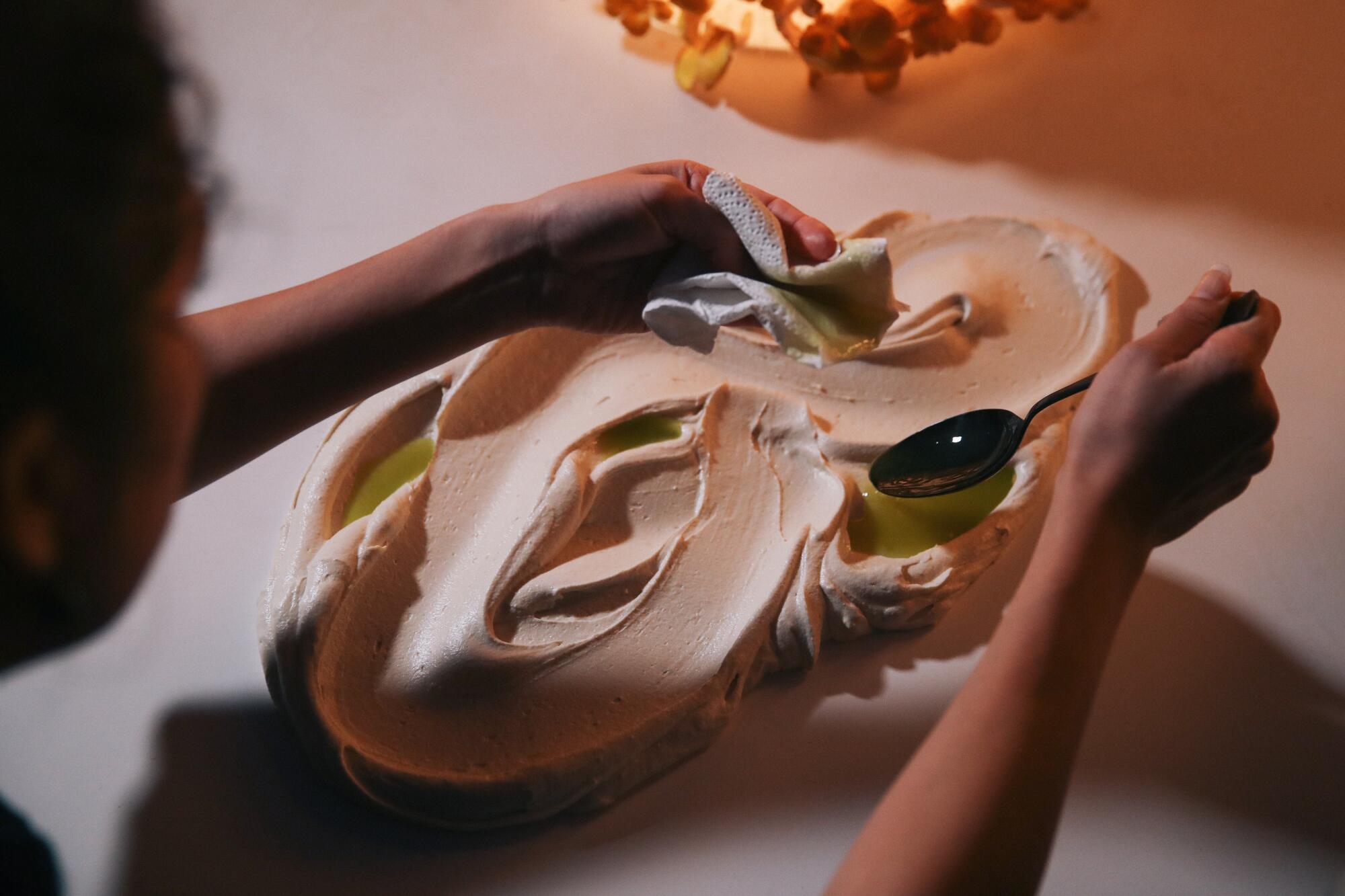
Illuminated mushrooms, sculptural sausage and hanging fruit mobiles: Food designers Ananas Ananas are pushing boundaries at parties and openings in L.A. And they could be changing how we eat.
- Share via
The sobrasada sits on a slab of black terrazzo perched on a pedestal, a straight-sided block of scoopable spiced sausage the color of red ochre whose surface is an undulant landscape. On a tabletop, resting on two piles of white pebbles, are charcoal corn crackers arranged in overlapping circles next to a matrix of whole heirloom tomatoes, cored and cut into wedges and drizzled with black-garlic-infused olive oil. A menu affixed to a corner of the low table looks like a museum placard and reads, in part: “crispy seaweed ribbons & labne dip; black corn crackers; miso onigiri with furikake.”
Guests at a September book launch party for Montalba Architects gather on one of the Hammer Museum’s mezzanines that overlook Westwood and circle the display like hawks riding thermals. Nobody wants to disturb the rows of ceviche on fresh sorrel leaves or mounds of honeycomb toffee on a long, terraced stand. But it’s the one thing on everyone’s minds: “Can we eat it?”
“It just always takes a second. I’ll spread the word,” says Eléna Petrossian, a founder of Ananas Ananas food-design studio, based in Los Angeles and Baja California’s Ensenada. “It’s almost like a social experiment.”
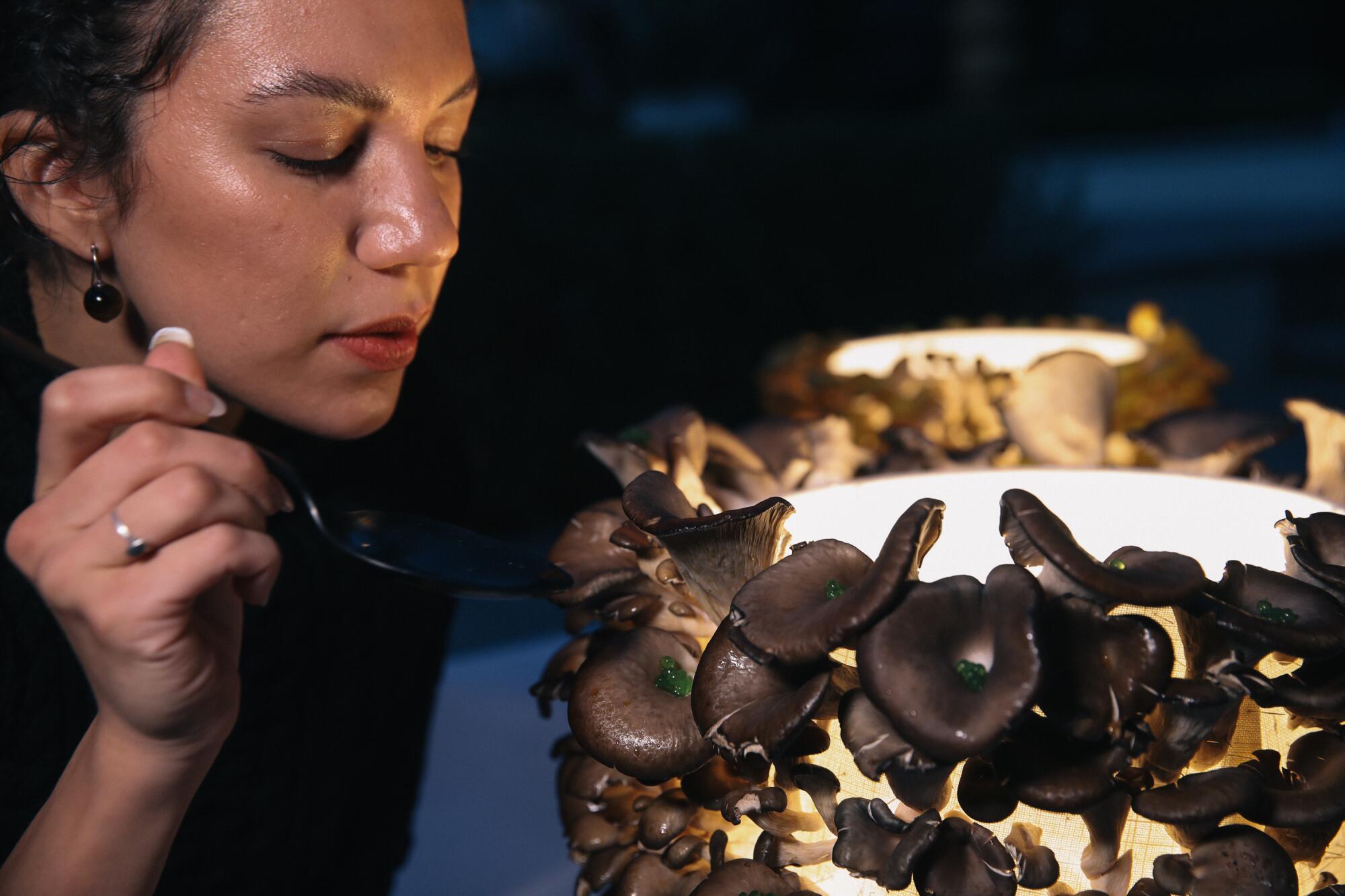
The first emboldened guest squats next to a concrete sculpture on the floor; shaped like a sort of half-cylinder, it has channels that contain labne mixed with chives. She picks up a dried seaweed chip to scoop some up, then eats it. Others swoop in.
Petrossian and co-founder Verónica González have designed their food installations for store openings, brand collaborations, gallery exhibits, magazine parties and product launches. As art, design, fashion and food reach maximum cultural crisscross, Petrossian and González say they’re exploring new sensory experiences and new ways to eat.
If you’re searching for the essential food of L.A., let our critic’s 2022 restaurant list be your guide. Find the best vegetarian, Italian, Mexican and more.
Often that means no plates or utensils for their edible sculptures, and sometimes no seating or tables. Instead, dolmades are served on sculpted wire fencing or banks of gravel, oysters on giant blocks of ice. Roasted carrots are strung from the ceiling; halved baguettes stand pointed ends up in thick swirls of butter that resemble waves from Japanese ukiyo-e paintings. Some of these are the kind of “jolie-laide assemblages” attributed to the likes of chef-artist Laila Gohar, who was recently profiled in the New Yorker and whose retail shop popped up at Dries Van Noten in Los Angeles last month.
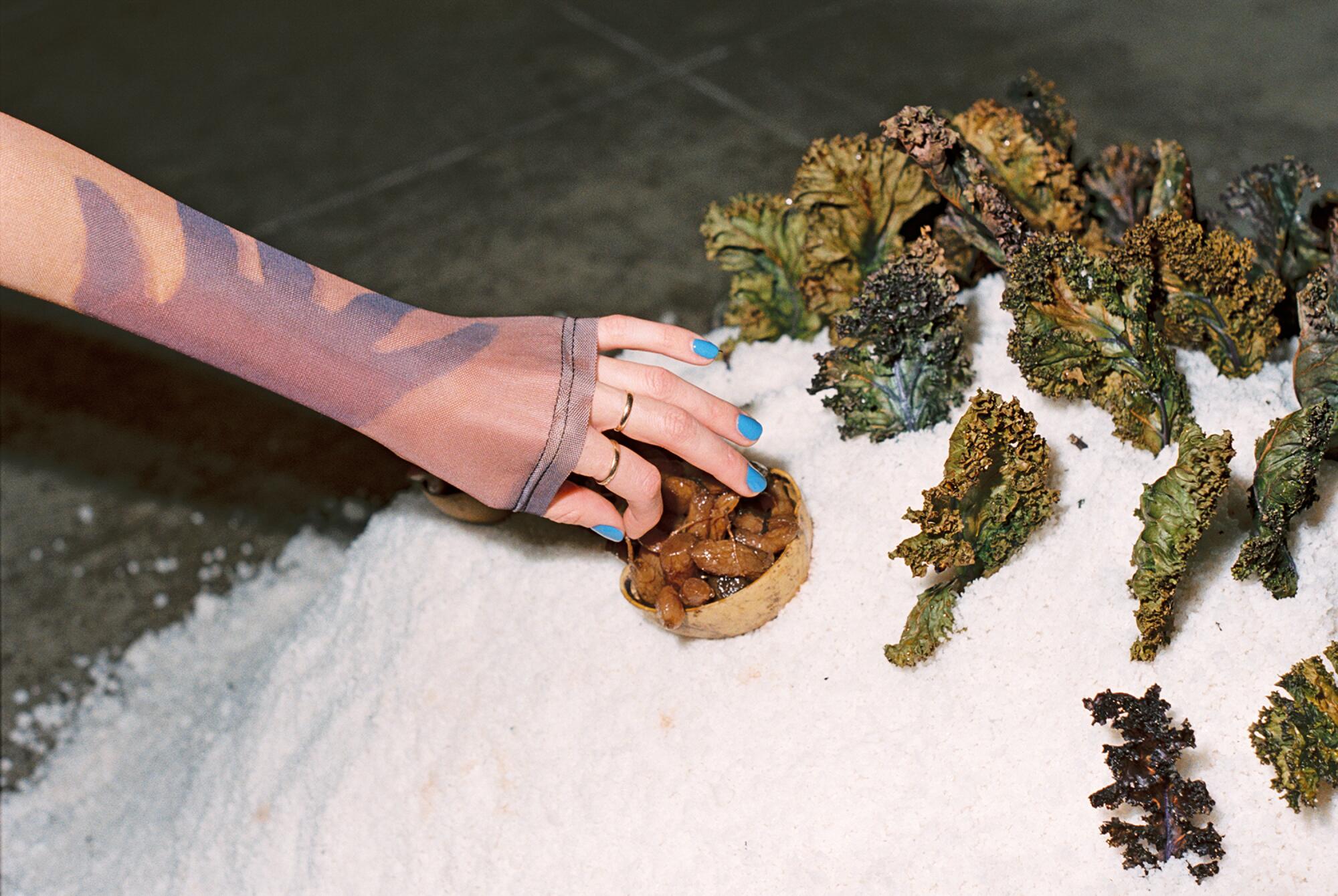
Petrossian says she and González are inspired by creators such as Dutch food artist Marije Vogelzang, who designed a “spa treatment” for the mouth in which participants are blindfolded and fully wrapped in a body hammock, with a hole cut out for the face (sort of like a banana costume) through which food may be delivered. One hears “an audio story of their own tongue speaking” via headphones, “advocating for people to pay more attention to their senses,” Vogelzang says in a video on her website.
“Architects, painters, sculptors — we’re trying to build food by bringing inspiration from other artists who work in another medium,” Petrossian says.
“She spent the time to get to know our work and the materiality,” says David Montalba, whose architecture firm’s projects include the Row in Los Angeles, LAX‘s Tom Bradley International Terminal and eco-chalets in Switzerland. “We wanted to tell a story” through food, he explains.
González, 29, is an industrial designer by training who grew up in Tijuana, Mexico, and Petrossian, 32, was born and raised in Glendale — both around a lot of food. Petrossian left a career in fashion production eight years ago and moved to Mexico City, where the two met through friends while living in Condesa.
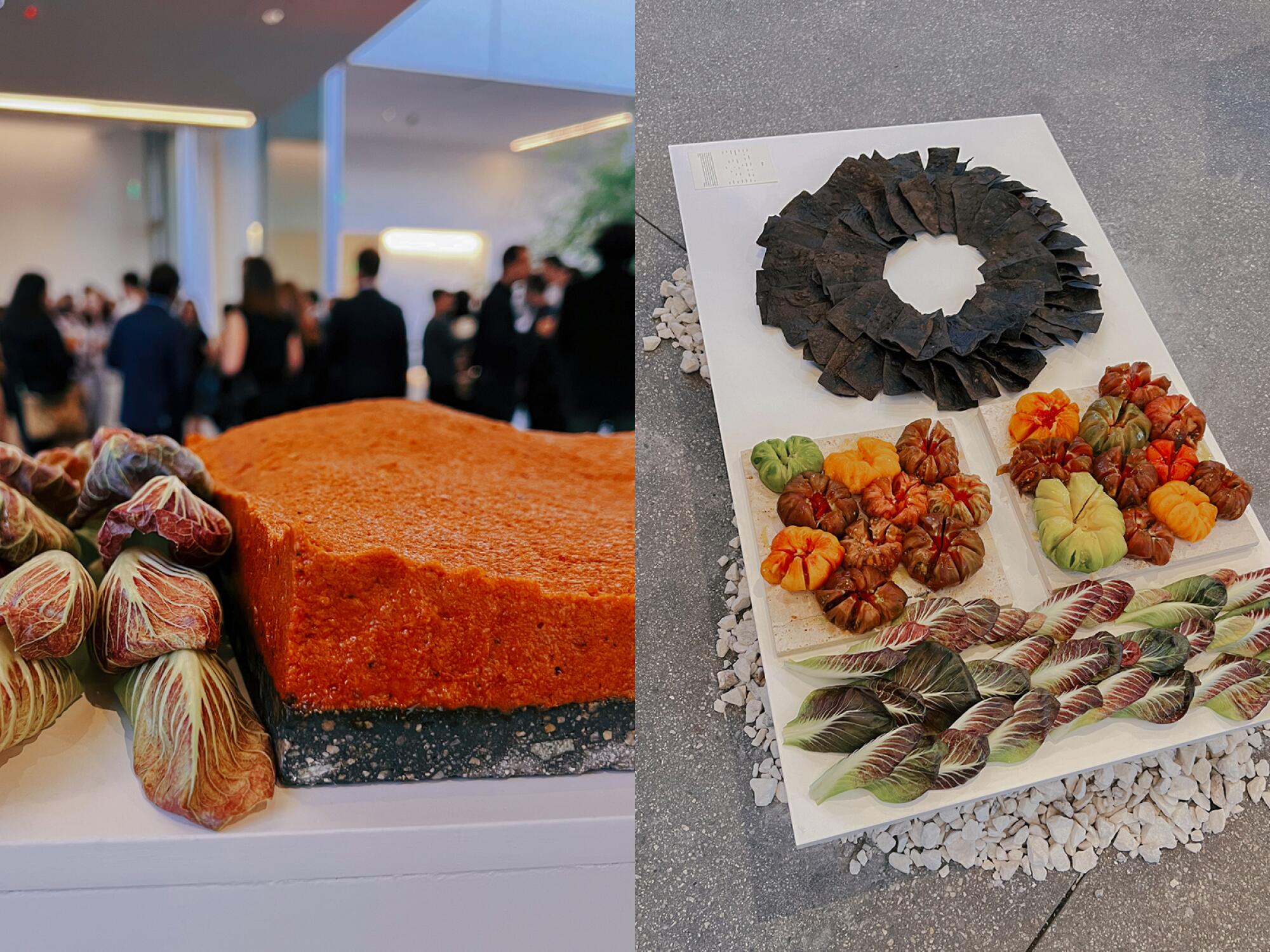
“We decided to do an installation for some friends in my living room,” Petrossian says, “and from their reactions, we thought, ‘Oh, everybody is so interested in this?’ We hung fruits from fishing wire. Some people were going in with their mouths. Some people were using napkins. Some were on the sidelines staring. It was an interesting study of looking at people figure out this way of eating.”
For most cooks, meal planning doesn’t start with a 3-D rendering. But for the Ananas Ananas duo, who collaborate long-distance — Petrossian now in Los Angeles, González in Ensenada since fall — it’s part of the process of creating a menu.
“We don’t ever do the same thing twice,” Petrossian says. “We measure everything, we make sure everything is going to work out. Everything is exactly to the measurements on the rendering.”
“I always focus on experience design, how objects and spaces behave around the human,” González says, “how humans connect with the form, the texture, the light. That’s what my understanding is, what I still do in my artistic practice. So when people ask, ‘How did you end up in food?’ Well, it’s very much connected. We’re thinking about materials and objects as ingredients.”
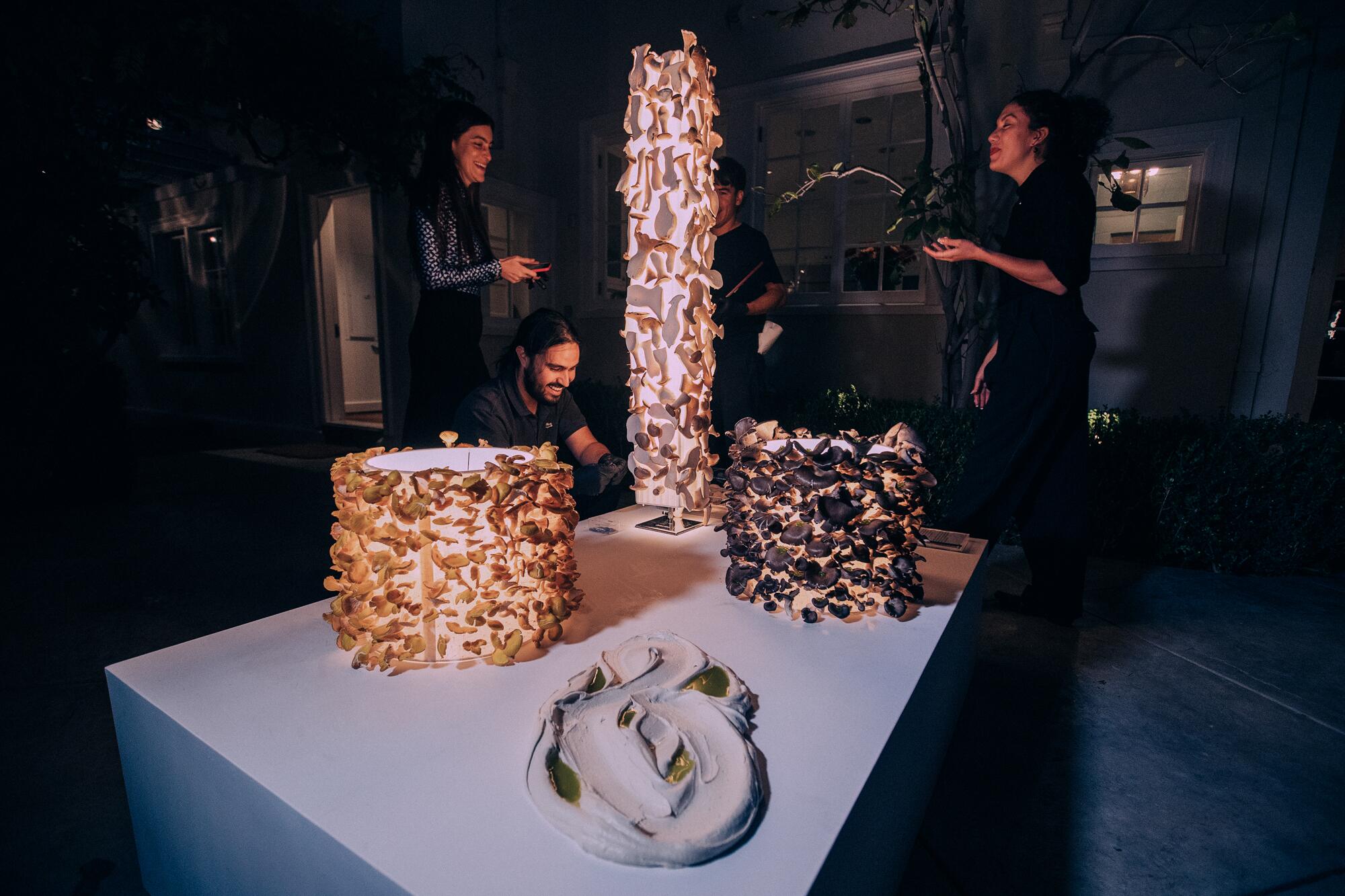
At a grand opening party in November, hosted by Cultured magazine for the Future Perfect — the gallery/residence located at the former Hollywood home of movie producer Samuel Goldwyn — González slices mushrooms in the kitchen while Petrossian puts the finishing touches on a raised platform next to the swimming pool. Built with the help of two assistants, it serves as the base for three illuminated lampshades of various sizes covered entirely with trumpet and oyster mushrooms.
The epicenter of L.A.’s mushroom boom is a 34,000-square-foot warehouse in Vernon, where Smallhold ramps up to grow more than 20,000 pounds a week.
“It’s kind of a paradox to have something that looks like it would live inside the house but actually outside, and not only can you interact with it,” Petrossian says, “you can eat it too.”
Laura Young, gallery director of the Future Perfect, walks through the mansion (it’s L.A.’s fourth Future Perfect house, which moves every couple of years), a complex of gallery and living spaces. “We love to remain nomadic because we love to keep changing,” Young says. “It’s about creating a new canvas. So [for the party], why not do food art?”
Petrossian affixed 4,000 straight pins to the three lampshades for hanging the mushrooms. “It took me two days just to put in the pins. That’s all I did — and watch TV. I didn’t move from my couch,” she says. “My initial idea was to sew each mushroom. But they dry out so quickly, you can’t do it too far in advance. We had to come up with a way to install the day of.”
“I love it,” the Future Perfect’s Young says. “I think conceptually it’s cool. Part of me wishes they were just sitting on lamps we have. I love that they have this mythical presence. Wouldn’t it be crazy if these were upstairs in the bedroom?”
As Petrossian attaches a mushroom slice to each pin, González follows with a brush of soy sauce and rice vinegar marinade, careful not to stain the lampshades or table base. “The mushrooms are so good on their own,” she says. “They just needed a kick with salty vinegar.”
When it comes to developing dishes, Petrossian says her Armenian background melds with González’s Mexican influences. “When I think about trying something, I can already taste what it’s going to be.”
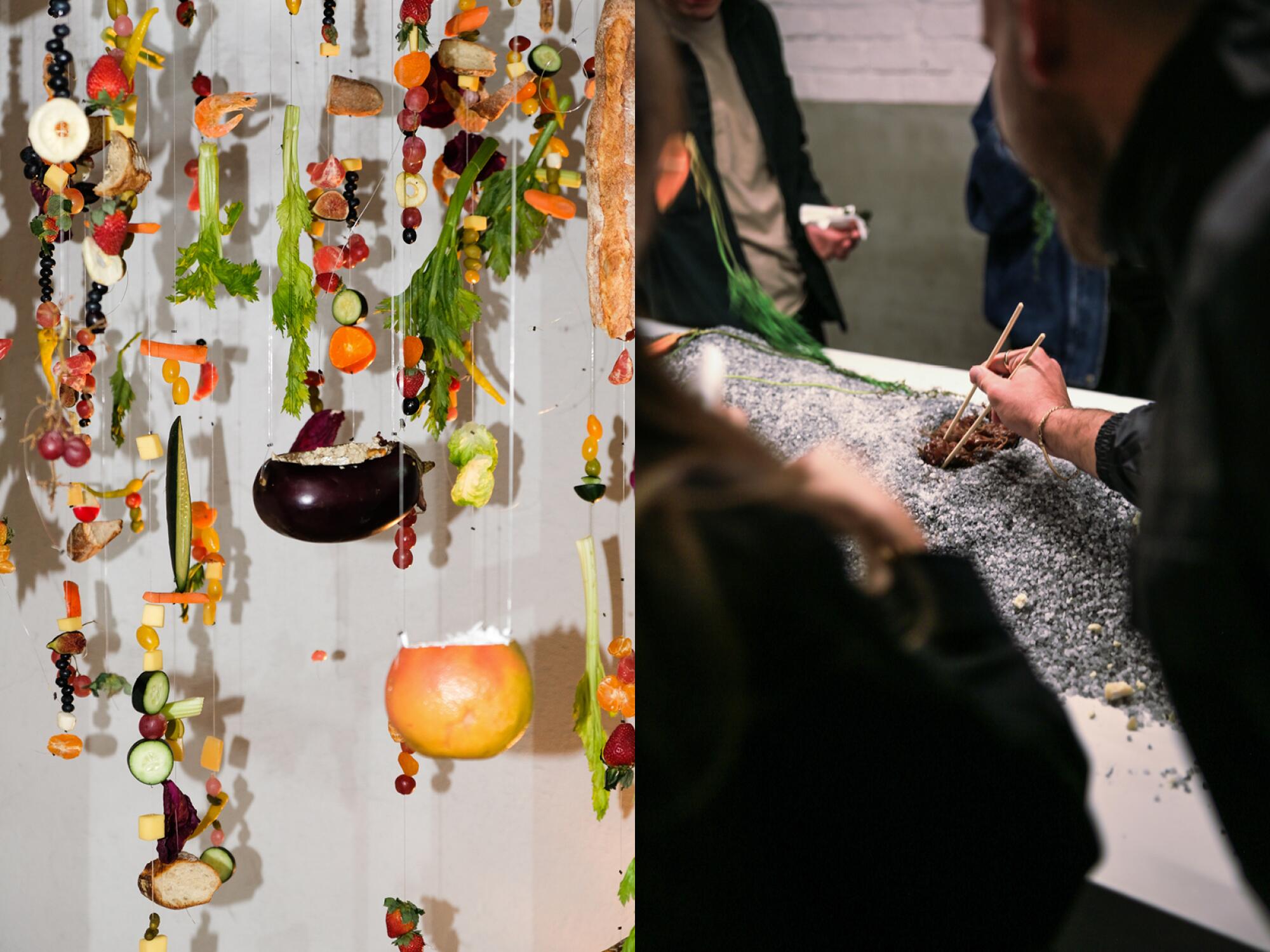
“You always come up with the Middle Eastern flavors,” says González.
“The saffron, the rose water, those flavors are very home for me,” Petrossian says. “She’ll do the cilantro-jalapeño thing.”
“And a little garlic. It’s never not there,” González says. “Everything has garlic in it.”
González smears cashew cream directly onto one corner of the table base, swooping it into an organic oval shape with concave areas that she fills with jalapeño-cilantro-infused olive oil from a squeeze bottle; this is the dip for the mushroom slices. The final touch is a spoonful of translucent green algae “caviar” placed into the divot of each yellow oyster mushroom cap.
When guests arrive, they start taking phone pictures of the mushroom lamps but are hesitant to touch the food. They bend over the platform to get a closer look, and finally someone removes a mushroom slice from one of the lampshades and swipes it through the cashew cream. Cilantro-jalapeño oil starts to seep around the outer edges of the dip.
From Times editors Laurie Ochoa and Daniel Hernandez: There’s no better place or moment for eating and cooking than in Los Angeles right now.
“So abstract food art is part of the thing. I think the fact that the dip doesn’t have a boundary is inviting,” says Hiroshi Kaneko, an architect at Studio Shamshiri. “And honestly, I think that tall one is actually a great lampshade.”
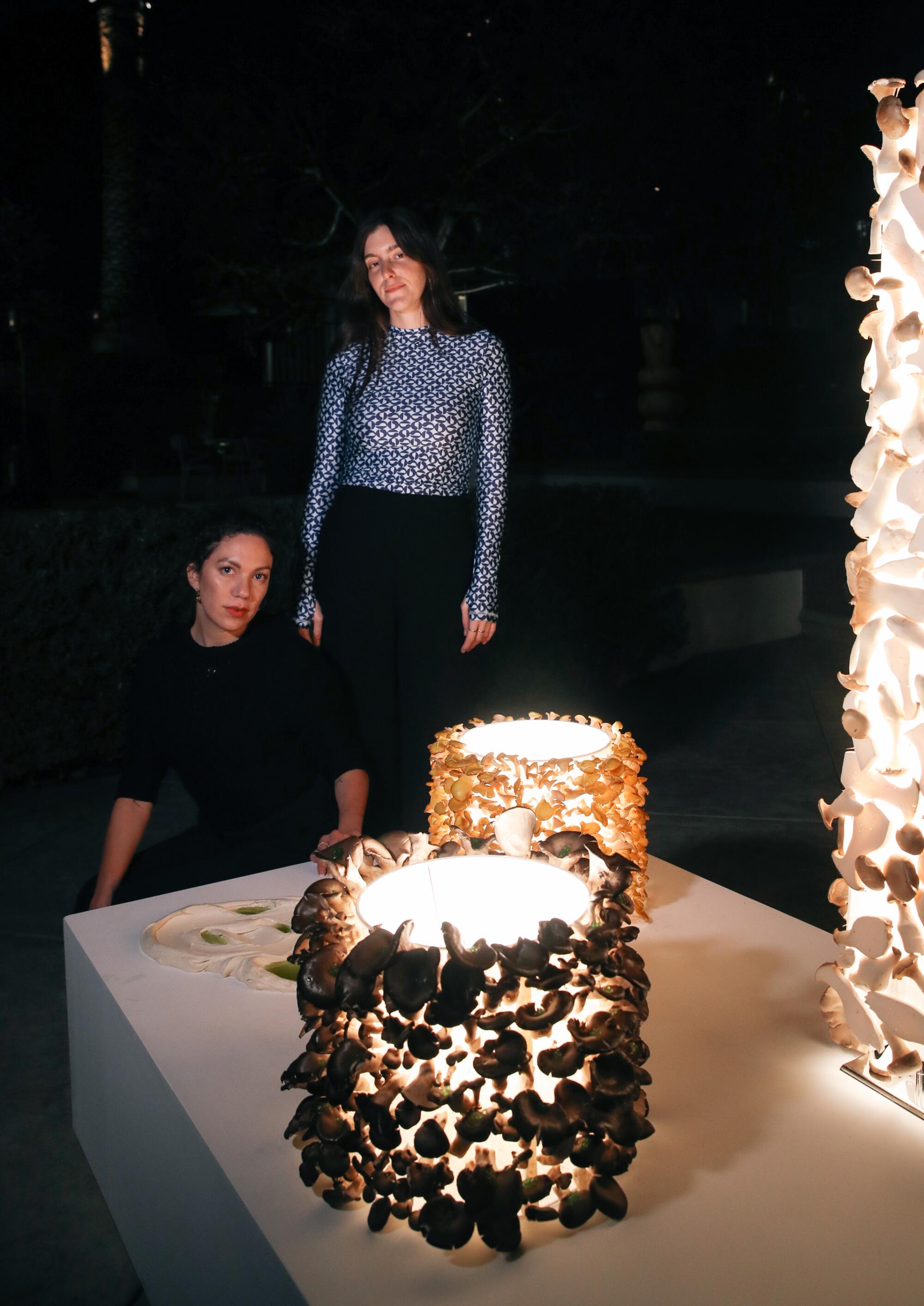
More to Read
Eat your way across L.A.
Get our weekly Tasting Notes newsletter for reviews, news and more.
You may occasionally receive promotional content from the Los Angeles Times.
